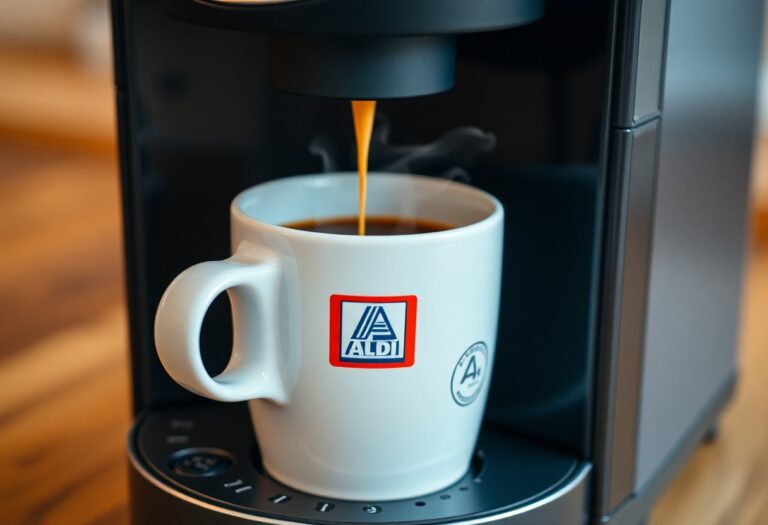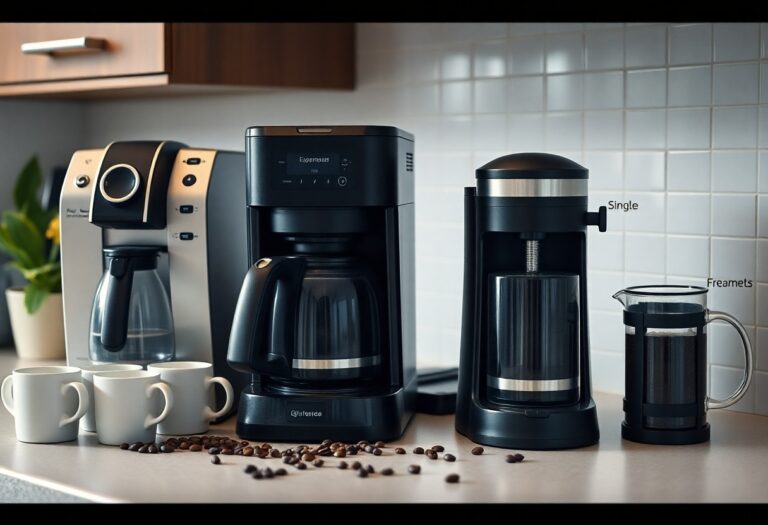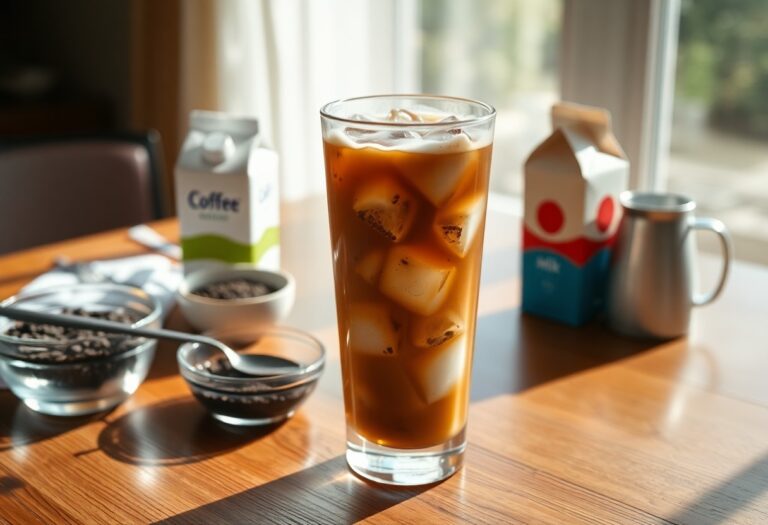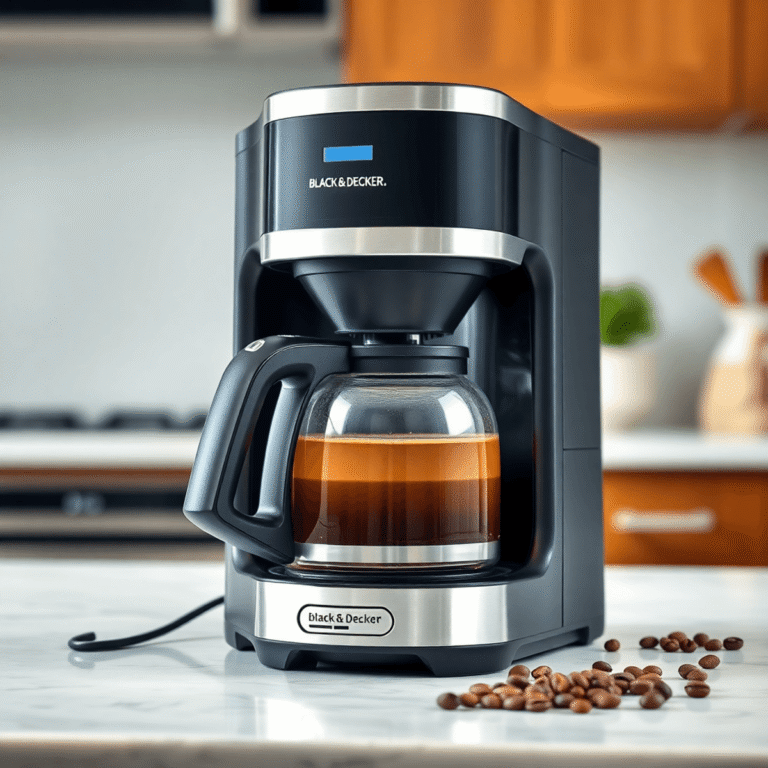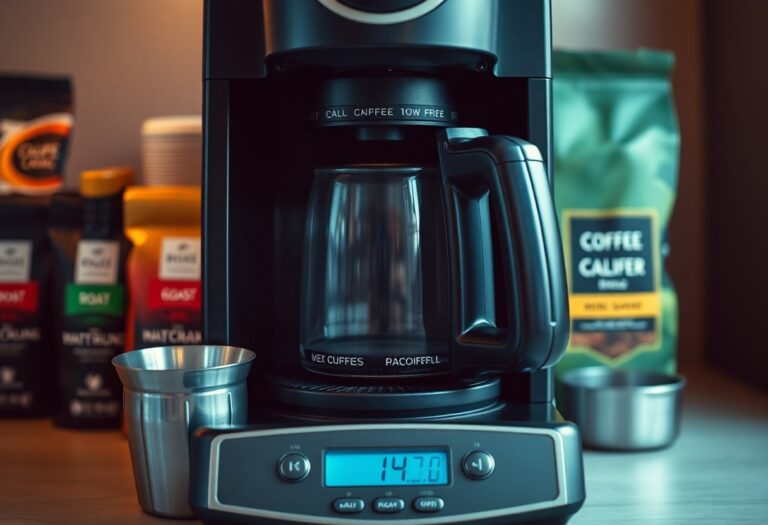What Coffee Do I Buy for an Espresso Machine – Shopping Guide
Just finding the right coffee for your espresso machine can elevate your brewing experience. When dicking out coffee, you should focus on coffee beans that are specifically roasted for espresso, as they deliver the rich flavors and creamy texture you desire. Look for high-quality Arabica or specialty blends to ensure a delightful taste. Additionally, the grind size is important—choose a fine grind for optimal extraction. In this guide, you’ll discover the best options to enhance your espresso making journey.
Key Takeaways:
- Choose coffee beans specifically labeled for espresso to ensure optimal flavor and extraction.
- Look for medium to dark roast profiles, as they tend to produce a richer crema and deeper flavors.
- Consider grind size; espresso requires a fine grind for proper pressure and extraction.
- Experiment with different origins and blends to find the taste profile that suits your preference.
- Pay attention to freshness; purchase whole beans and grind them just before brewing for the best results.
Decoding Espresso Terminology
Understanding espresso terminology can significantly enhance your coffee selection process. Terms like “single origin,” “blend,” and “crema” each play a vital role in defining the quality and taste of your cup. For a deeper investigate specific coffee types and their characteristics, check out this What Coffee To Use For Espresso Machines guide.
Understanding Bean Varieties: Arabica vs. Robusta
To choose the right coffee for your espresso, you must understand bean varieties. Arabica beans are known for their sweet, smooth flavors and higher acidity, while Robusta beans tend to be stronger and more bitter with a higher caffeine content. Many espresso blends combine both to achieve a balanced taste that appeals to different palates.
The Role of Roast Levels in Flavor Profile
The roast level of your coffee beans dramatically impacts the flavor profile of your espresso. Light roasts highlight the inherent bright and fruity notes in the coffee, while medium roasts develop sweeter caramel tones. Dark roasts bring out rich, bold flavors that can produce a syrupy mouthfeel but may also overshadow the bean’s unique characteristics. Typically, espresso is brewed with medium to dark roasts to ensure a robust and well-rounded cup, enhancing the coffee’s body and crema.

The Art of Selecting the Perfect Beans
Choosing the right coffee beans for your espresso is an art that blends personal taste with quality considerations. You need to think about the flavor profile you desire, whether it’s a bold, rich taste or a lighter, fruity note. Opting for specialty beans, often labeled with details about their origin, processing methods, and roast level will elevate your espresso experience. Take your time to explore different varietals and blends to find the perfect match for your palate, as this selection will significantly influence your brewing success.
Freshness: Why Date Matters More Than You Think
Freshness plays a pivotal role in producing a remarkable espresso shot. Coffee beans start to lose their flavor within weeks of roasting, so always check the roast date on the packaging. Opt for beans that are freshly roasted, ideally within two weeks of your purchase, to ensure the aromatic oils and compounds are at their peak for extraction. A recent roast delivers vibrant flavors and aromas, transforming a good espresso into a great one.
Sourcing Quality: Where to Buy and What to Look For
Finding the right source for your coffee beans can significantly affect your espresso experience. Consider local coffee roasters or specialty coffee shops that prioritize quality and transparency in sourcing. Look for beans labeled as single-origin, direct trade, or organic to ensure you’re getting a product that’s cared for from farm to cup. Additionally, check for certifications or cupping scores to gauge the quality, and engage with staff who can offer personalized recommendations based on your taste preferences.
Local coffee roasters often provide options that are roasted in small batches, ensuring freshness and quality. They typically have a wealth of knowledge about their products, so don’t hesitate to ask questions. Explore seasonal offerings as they can highlight unique flavor profiles specific to particular regions. Check online reviews or local community forums to gather feedback on roasting companies, and always sample a few varieties before committing to a larger purchase, as this will help you hone in on beans that resonate with your taste.

Grinding Matters: Precision for the Perfect Shot
The grind size of your coffee beans is a pivotal factor in extracting the optimal flavors and aromas for your espresso. If the grind is too coarse, water flows too quickly, resulting in a weak and under-extracted shot. Conversely, a grind that’s too fine may lead to over-extraction, yielding a bitter taste. Aiming for the ideal consistency—a texture resembling granulated sugar—is important for achieving that well-balanced espresso shot you strive for.
The Science Behind Grind Size for Espresso
Grind size plays a significant role in determining how quickly water passes through the coffee. Fine grounds increase surface area, promoting quicker extraction of oils and flavors, while coarse grounds do the opposite. For espresso, the goal is to balance these variables, allowing water to extract flavors within 25 to 30 seconds without over-extracting bitter compounds. Precision in grind size ensures you unlock the full potential of your coffee beans.
Choosing the Right Grinder: Burr vs. Blade
Your choice of grinder can dramatically affect the quality of your espresso. Burr grinders offer consistent grind sizes, making them the preferred choice among coffee enthusiasts and baristas. They use two revolving abrasive surfaces to crush the beans uniformly. In contrast, blade grinders chop the beans unevenly, leading to a mix of large and small particles that can compromise extraction and flavor. A burr grinder provides the precision necessary for dialing in the perfect grind size, ensuring a consistently enjoyable espresso experience.
While blade grinders may seem appealing due to their lower price points, the uneven grind they produce can hinder your ability to achieve that perfect espresso shot. Burr grinders, though often more expensive, allow for an adjustable grind size, which is important for tweak and experimentation according to your coffee’s roast and origin. Investing in a quality burr grinder is a step toward elevating your home espresso game, ensuring that every shot bursts with the flavor nuances you seek.
Brewing Techniques that Elevate Your Espresso
Mastering brewing techniques can significantly impact the quality of your espresso. Techniques such as controlling your extraction time, water temperature, and pressure all lead to variations in the flavor profile. By fine-tuning these elements, you can achieve a rich, balanced shot with the desired crema. The right combination of skills and knowledge will elevate your espresso experience and impress your palate.
Dosage and Tamping: Getting It Just Right
The dosage of coffee grounds and how you tamp them are vital for preparing a consistent and delicious espresso shot. Use a scale to measure out approximately 18-20 grams of coffee for a double shot. After distributing the grounds evenly in the portafilter, apply consistent pressure while tamping—aim for around 30 pounds of force—to create a uniform puck. This ensures that water flows evenly through the coffee, producing a better extraction.
Espresso Machines: A Comparison of Features
| Feature | Entry-Level, Mid-Range, High-End | ||
| Pressure Control | Single boiler, manual | Dual boiler, semi-automatic | PID control, fully automatic |
| Grinding Integration | Separate grinder needed | Built-in grinder option | Integrated precision grinder |
| Price Range | Under $500 | $500-$1500 | Above $1500 |
When identifying an espresso machine, understanding its features helps you find the right fit for your needs. An entry-level machine might suffice for casual drinkers, offering vital functions at a lower price point. Conversely, mid-range machines often feature dual boilers and integrated grinders for the home barista. High-end machines showcase advanced technology, such as PID temperature control and enhanced steam capabilities, catering to those seeking absolute refinement in their espresso experience.
Pairing and Recipes: Enhancing Your Espresso Experience
Elevating your espresso experience goes beyond brewing techniques and selecting the right beans. By exploring flavor pairings and crafting unique signature drinks, you can take your enjoyment of espresso to new heights. Pair your espresso with complementary tastes, or experiment with innovative recipes that highlight the rich and varied profiles of the coffee. With a little creativity, you’ll discover countless combinations that delight your palate and impress your guests.
Flavor Pairings that Bring Out the Best in Your Brew
Certain flavors can enhance your espresso, making it even more enjoyable. Pairing with dark chocolate can highlight the coffee’s rich undertones, while a splash of cinnamon lends warmth and depth. For the adventurous, a touch of orange zest or vanilla can add a fresh twist, balancing the boldness of your espresso. Explore different flavor combinations to enhance your coffee rituals and awaken your taste buds.
Crafting Signature Drinks: Beyond the Traditional Espresso
Branching out from traditional espresso opens up a world of flavor possibilities. Try creating a mocha espresso by blending your shot with steamed milk, chocolate syrup, and a sprinkle of cocoa powder. Alternatively, an affogato, where a hot shot of espresso is poured over creamy vanilla ice cream, delivers a luxurious treat. Don’t hesitate to experiment with flavored syrups or even spices for a truly personalized espresso drink that reflects your taste preferences.
To wrap up
To wrap up, selecting the right coffee for your espresso machine involves understanding your taste preferences, choosing high-quality beans, and considering roast levels that best suit your desired flavor profile. Look for freshly roasted options, preferably within two weeks of roasting, and experiment with blends that cater to your liking, whether you prefer a rich, bold taste or a smoother finish. Take your time to explore different origins and grind sizes until you find the perfect match that enhances your espresso experience, ensuring every shot you brew is delightful and satisfying.
FAQ: What Coffee Do I Buy for an Espresso Machine – Shopping Guide
Q: What type of coffee beans are best for espresso?
A: The best type of coffee beans for espresso are typically Arabica and Robusta beans. Arabica beans are known for their smooth flavors and complex aromas, making them a popular choice for espresso. Robusta beans, on the other hand, have a stronger, more bitter taste and higher caffeine content, which can enhance the crema on top of your espresso. Many espresso blends use a combination of both types to create a balanced flavor profile.
Q: Should I buy pre-ground coffee or whole beans for my espresso?
A: Whole beans are generally the best choice for espresso as they preserve the coffee’s freshness and flavor for a longer time. Grinding beans just before brewing will yield a more aromatic and flavorful shot of espresso. If you choose to buy pre-ground coffee, look for options that are specifically labeled for espresso to ensure the grind size is appropriate for your machine.
Q: What roast level is ideal for espresso?
A: Espresso can be made from various roast levels, but medium to dark roasts are often preferred. Medium roasts have a balanced flavor profile, showcasing the beans’ inherent characteristics, while dark roasts tend to have richer, bolder flavors with notes of chocolate and caramel. Ultimately, the choice of roast depends on personal preference, so it’s a good idea to experiment with different roast levels to find what you enjoy.
Q: Are there specific flavor profiles I should look for in espresso coffee?
A: Espresso can exhibit a wide range of flavor profiles, including fruity, nutty, chocolatey, and floral notes. When opting for coffee for your espresso machine, consider trying blends that are specifically crafted for espresso, as they are designed to produce a well-rounded taste. Tasting notes provided by roasters can give you an idea of what flavors to expect and help you find a coffee that suits your palate.
Q: How should I store my espresso coffee to maintain freshness?
A: To keep your espresso coffee fresh, store it in an airtight container in a cool, dark place, away from sunlight and moisture. Avoid keeping it in the fridge or freezer, as fluctuating temperatures can introduce moisture and affect the quality of the beans. For optimal freshness, consume your coffee within a few weeks of opening the bag, and if possible, buy coffee in smaller quantities to ensure you’re always using the freshest beans.


